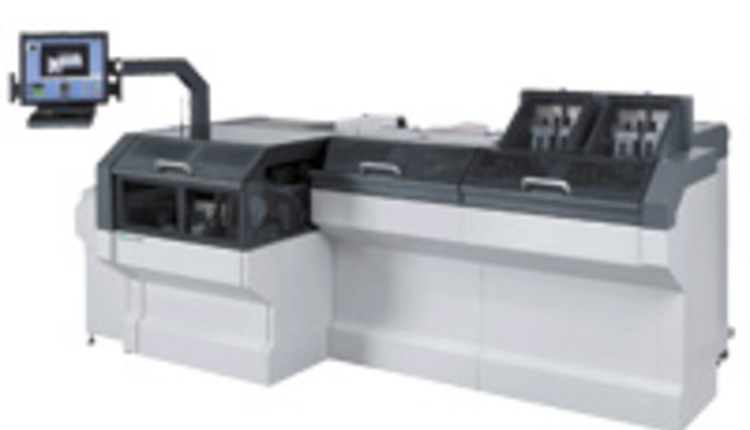Inserting is an art, not a science. It is an art that requires expert set up to adjust for paper manufacture (porosity, grain direction and strength, coatings etc), envelope construction (side seam, diagonal seam, flap depth etc), size, thickness and curl. Most inserters are crude instruments requiring minute manual adjustments to handle the variations. Set-up staff and operators are the key. Operators running the same job with the same paper, envelopes and inserts on a typical gripper arm or inline inserter with friction or rotary gripper drum insert feeders can vary in hourly productivity from 3,500 filled envelopes per hour to 7,500 filled envelopes per hour or more. The main reason for variation is the skill required to set up the job and adjust the system for the quirks of the products being processed. There is one way to level the playing field and make major improvements in throughput for set-up people and operators with average skill levels: automating set-up adjustments so they are precise no matter who does the set-up.
Automation starts with envelope set-up. Systems that automatically adjust for envelope and flap width and depth based on programming the numbers into the system save minutes to hours in set-up time. Systems that store those set-ups and automatically re-set based on calling up a previously programmed job save that time repeatedly. It is known that envelopes can differ minutely from batch to batch. Automated systems that allow minute compensating adjustments almost automatically extend this productivity improvement. Operators with or without tools are generally not nearly as precise with their adjustments allowing large operator-based variances in productivity.
The same can be said of insert stations. Adjusting stations to the precise width, depth and thickness of the insert through automation almost completely takes operator skill out of the equation. Stations that can be easily adjusted to respond to differences in thickness found in saddle stitched booklets and insert slipperiness (gloss) as well as the open faces found in inserts such as Z-folds save time and compensate for differences in operator training and skill.
Systems that process invoices and statements face additional challenges. Setting up a folder can be challenging. Getting the fold precisely where one wants it when faced with perforations for tear-offs can be nearly impossible. Automation makes that easy with it's ability to set fold plates automatically. Manual operator adjustments are truly hit or miss based on operator skill or luck. Similarly, setting the fold roller gap to properly to get a good fold on a range of thicknesses from one sheet to N sheets is extremely difficult. Trial and error takes time. Automatic adjustments save a lot of time and result in far fewer jams and stops.
Feeding systems that automatically adjust for different form lengths and widths also save set-up time and substantially improve operating productivity. Operators with or without adjustment tools are working based on their knowledge and experience. Automatic adjustments are based on document size and algorithms developed through extensive testing. They do it better all of the time.
Customers who rely on automation level the playing field among their operators making all of them more productive and substantially improving their total throughput. Customers who never or rarely change jobs or those who use professional set-up technicians may benefit less than those who change jobs regularly, but they too benefit. Inserting systems are rarely identical in their processing ability either because of manufacturing or maintenance differences. In these cases, automatic adjustments serve to level the playing field between systems. The minute adjustments possible with automation make it much easier to adjust for individual system eccentricities.
When there are problems, and invariably there are problems, automation also extends to a system's ability to tell its servicer what is wrong and how to fix it. Automation allows quicker resolution returning systems to production sooner.
The world leader in automation of paper handling systems, including inserters, is Mathias Bäuerle GmbH (MB). MB holds most of the basic patents in the automation of paper feeding and folding. autoSET, the World's most automated and productive inserting system, is its latest achievement. It can be seen on the following web sites: www.mb-bauerle.de and www.gbr.com.
This article was written by Jeffrey H. Brewer, Vice President & General Manager of GBR Systems Corporation. GBR is a wholly owned subsidiary of Mathias Bäuerle GmbH.

